 Email: support@vespaagogo.com
Email: support@vespaagogo.comVietnam Travel
- Home
- Travel Tips
Vietnam Flood Warning - Live Traveler Advisory & Safety Guide (Updated November 7, 2025)
2025-11-07
1. Overview - The 2025 Flood Crisis in Vietnam
As of November 7, 2025, Vietnam continues to battle one of its most widespread flood events in recent memory. Although Typhoon Kalmaegi (Bao so 13) has officially weakened over Laos, its residual moisture system keeps pumping torrential rain across the country’s midsection, creating a multi-front crisis that has stretched from the Central Coast to the Mekong Delta.
The three critical flood fronts
- Central Vietnam (Hue – Hoi An – Da Nang): Rivers and drainage systems are overwhelmed, leading to renewed, dangerous flooding in both coastal and inland areas.
- Central Highlands (Gia Lai – Dak Lak – Lam Dong): Heavy rainfall continues to trigger landslides and cut off rural roads.
- Mekong Delta (Dong Thap Muoi): High tides combine with continuous rain, inundating villages and farmland in an unusual, off-season flood.
Despite these challenges, Hanoi and Ho Chi Minh City remain stable, safe, and fully operational - now functioning as the country’s two “safe islands” for both domestic and international travelers.
If you are currently in Vietnam or arriving soon, the government’s official advice is clear:
Avoid non-essential travel to the Central and Highland regions.
Use air transport only to move between northern and southern Vietnam.
2. Central and Southern Vietnam - Where the Flooding Is Most Severe
Hue and Hoi An Flooding Update
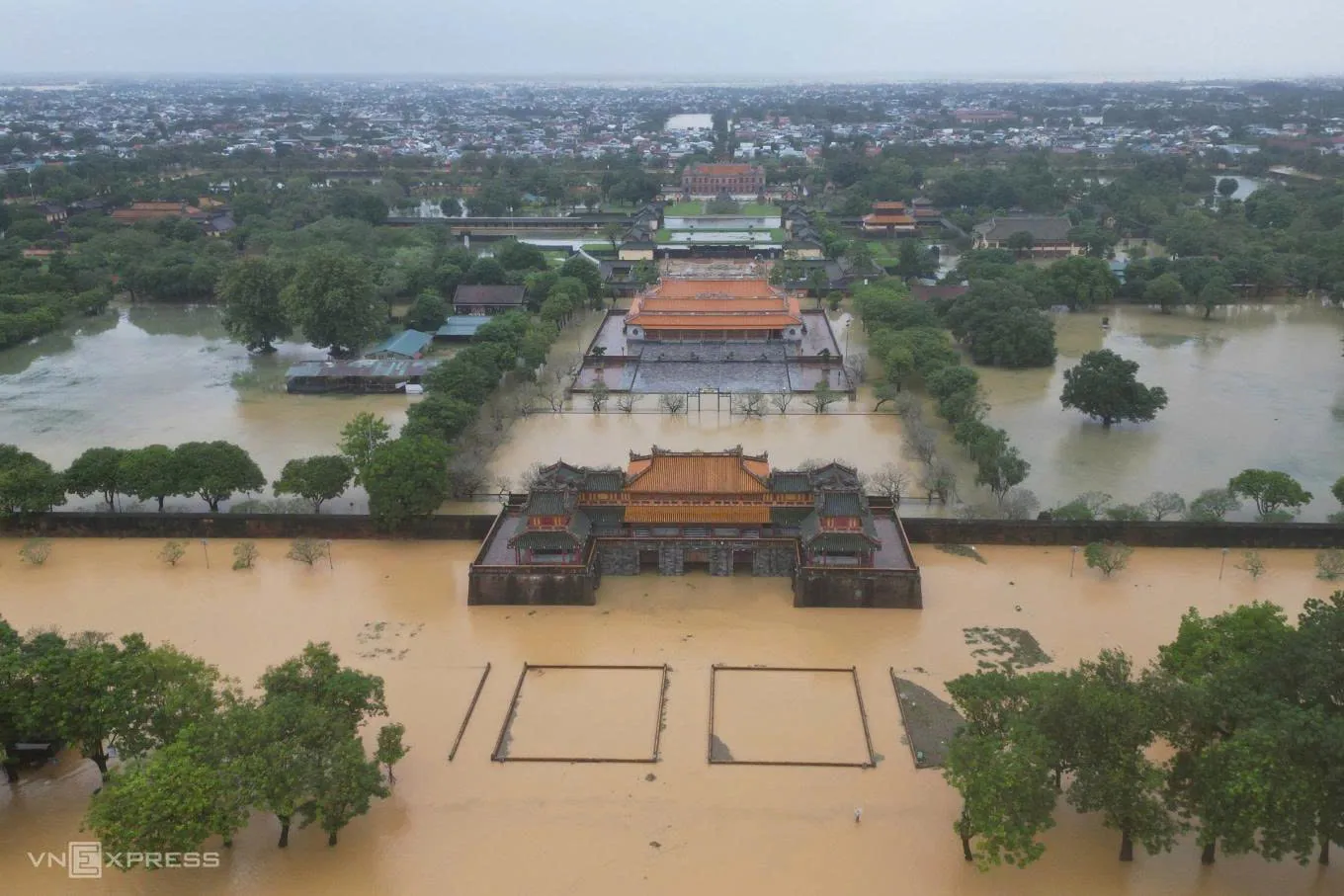
The historic city of Hue is emerging from a devastating 23-day flood that destroyed over 100,000 homes and damaged portions of the Imperial Citadel. Now, as the Kalmaegi rain bands return, both Song Huong and Song Bo are rising again. Residents are exhausted, infrastructure is fragile, and further flooding is expected in the coming days.

Downstream, Hoi An’s Ancient Town has once again turned into a waterlogged maze. Streets like Bach Dang, Nguyen Thai Hoc, and Tran Phu are submerged waist-deep, while power and boat transport are suspended.
Many businesses have moved goods to upper floors or sealed entrances with flood barriers.
Authorities are urging all tourists to stay indoors or relocate to higher buildings.
Travelers should note:
- Tourist sites and lantern boats are temporarily closed.
- Water levels change hourly; strong currents make walking unsafe.
- Even after the water recedes, sanitation and power will take days to restore.
Recommendation: postpone travel to Hue and Hoi An until further notice.
Da Nang Flooding and Airport Situation
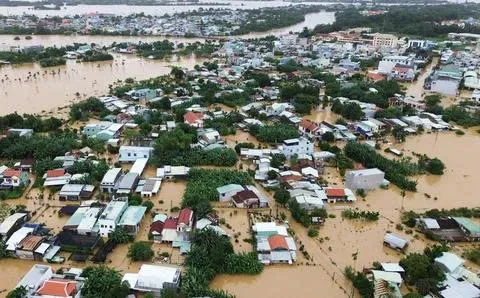
Da Nang, the urban and transport hub of Central Vietnam, has also been hit hard by continuous rain. Entire neighborhoods in lower districts remain waterlogged, and traffic is being rerouted around flooded streets.
Flights at Da Nang International Airport (DAD) have resumed after temporary suspension, but intermittent delays continue due to weather. Passengers should check flight status directly with airlines before traveling to the airport.
The city remains on high alert (Level 4), and more than 1,000 households have been relocated from at-risk zones. Tourist activities, including visits to My Khe Beach and day trips over Hai Van Pass, are currently unsafe.
If you are in Da Nang, your best option is to:
- Stay indoors during heavy rainfall.
- Avoid riding motorbikes or walking near coastal roads.
- Wait for official clearance before attempting onward travel.
Central Highlands Landslides and River Surges
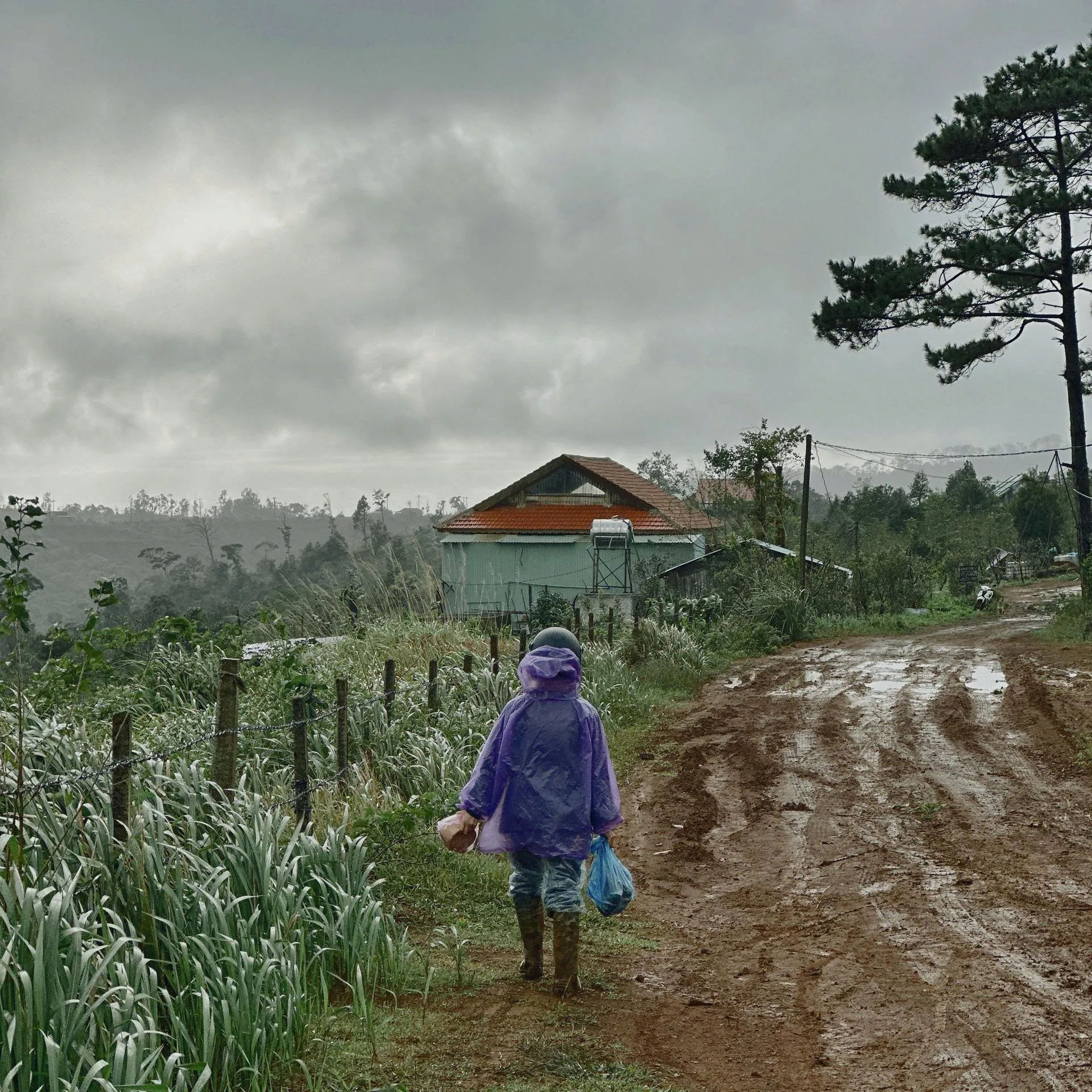
The Central Highlands provinces of Gia Lai, Dak Lak, and Lam Dong are facing a different kind of disaster. Here, the danger is not from river floods, but from slope failure and landslides.
Roads that are usually scenic routes for backpackers have now turned into dangerous traps.
At least three casualties have been confirmed in Dak Lak following recent landslides. Mountain passes near Da Lat are particularly unstable, and authorities have banned travel through these routes.
Travelers who had planned motorcycle trips through the highlands should immediately cancel and reroute via air.
Mekong Delta High-Tide Flooding

Further south, the Mekong Delta is experiencing abnormal, off-season floods. In Dong Thap Muoi, high tides have combined with days of heavy rain, submerging farmlands and isolating communities.
Local families are navigating by boat, cooking on raised platforms, and sleeping on elevated beds to avoid sudden water surges.
While some travelers may confuse this with the region’s romanticized “floating season,” the current event is a natural disaster, not a tourist attraction.
All eco-tours and homestays in flooded areas have been suspended until conditions improve.
3. Safe Zones - Hanoi and Ho Chi Minh City Conditions
Hanoi Flooding Outlook
In the north, Hanoi remains unaffected by the storm’s core impact. The city’s weather is characterized by occasional drizzle and a cool 20–22°C temperature range, ideal for urban exploration.
There are no reports of serious flooding or infrastructure damage.
Travelers can continue to enjoy the capital’s major attractions - Hoan Kiem Lake, Old Quarter, and Temple of Literature - without issue.
However, train and bus routes connecting Hanoi to Central Vietnam may be delayed or canceled, so air travel remains the only reliable method of inter-regional transport.
Ho Chi Minh City Flooding and Why It’s the Safest Base
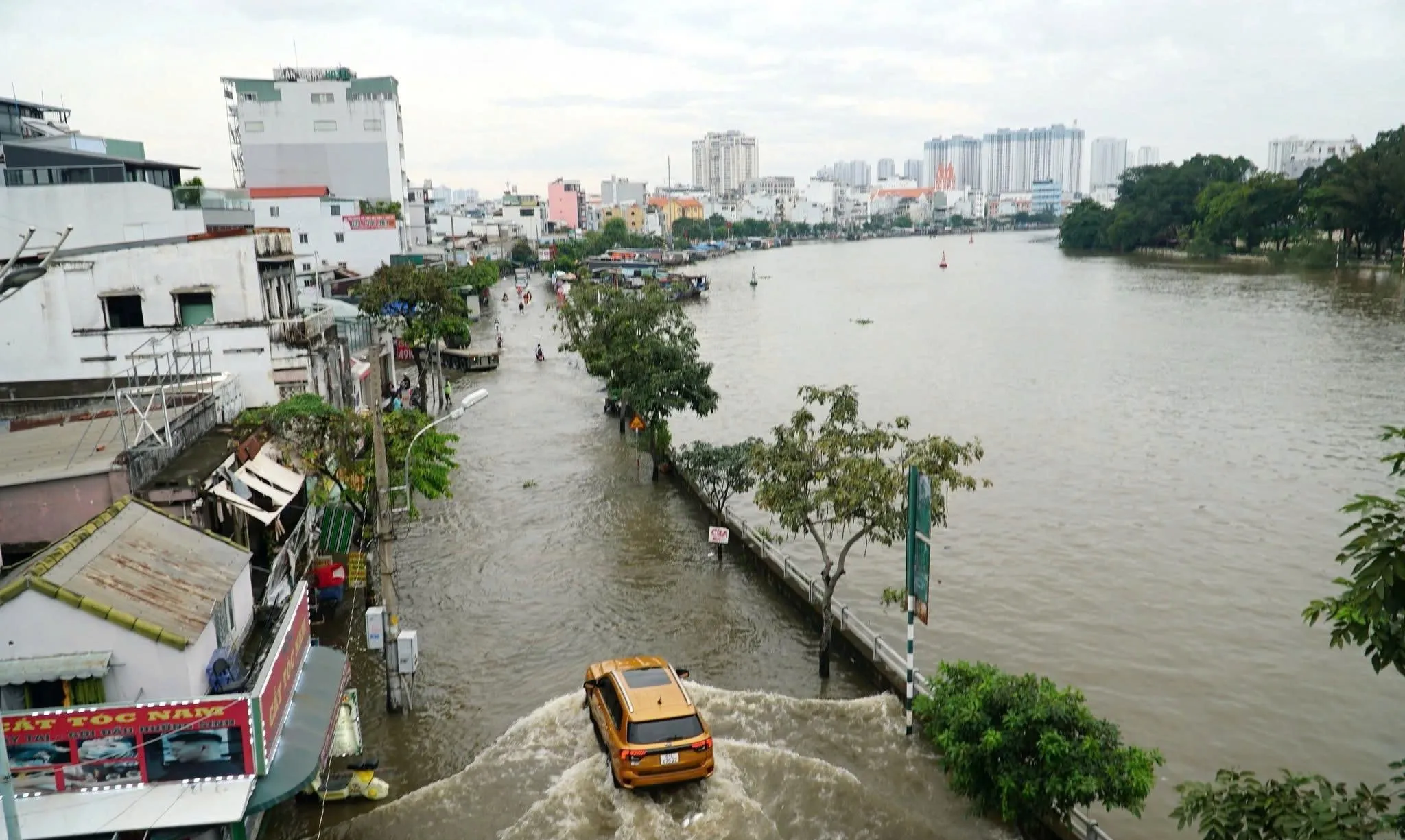
In contrast, Ho Chi Minh City (Sai Gon) stands almost completely untouched by the nationwide flood crisis.
While short-term high tides occasionally raise water levels along the Song Sai Gon, they cause only mild, short-lived street flooding in low-lying neighborhoods such as Thao Dien (District 2), Phu My Hung (District 7), and Thanh Da (Binh Thanh).
These puddles usually drain within an hour.
Everything else - from the airport to tourist attractions - is operating normally.
Flights, restaurants, night markets, and cultural tours continue uninterrupted.
That’s why Ho Chi Minh City has become the de facto safe zone for travelers during the 2025 flood season. It’s a well-connected, lively base where visitors can stay productive, rest, or explore the country’s southern culture while waiting for weather improvements.
In short: if your Central Vietnam trip was canceled, reroute to Sai Gon. You’ll stay dry, comfortable, and still experience the vibrant essence of Vietnam.
4. Travel and Transport Disruptions Across Vietnam
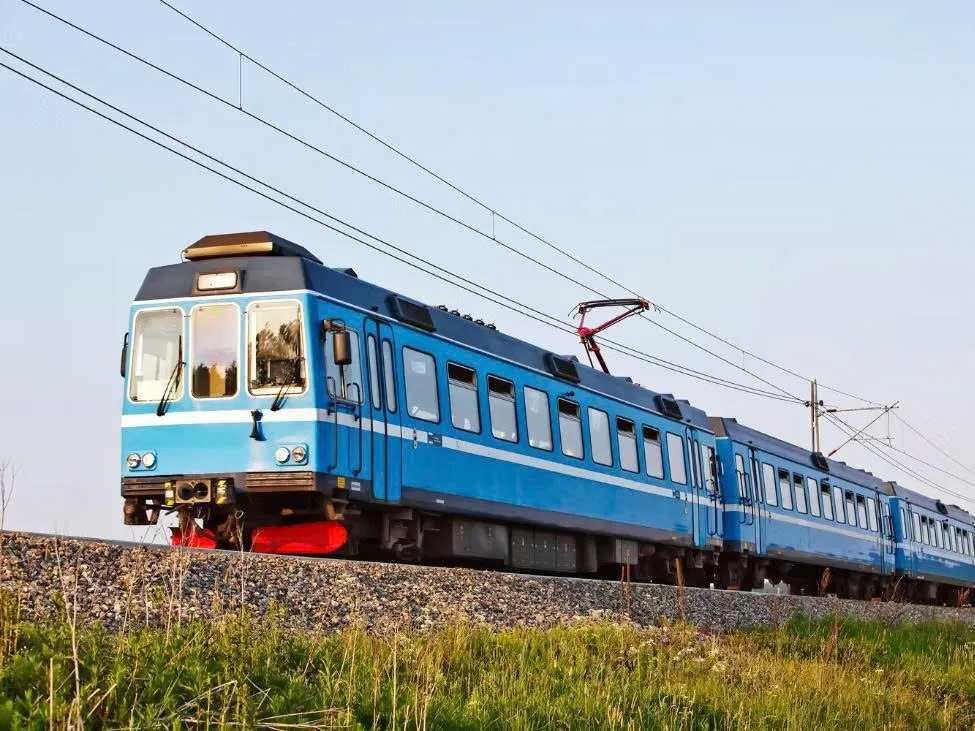
Flooding and landslides have effectively split Vietnam’s transport network in two.
- The North–South railway line is currently out of service in central provinces due to washed-out tracks and collapsed embankments. Some sections of rail are suspended in mid-air after landslides.
- The National Highway 1A and Ho Chi Minh Highway are impassable in multiple areas, with severe erosion and flooding.
- Even newly built expressways like Da Nang – Quang Ngai face closures due to debris and water damage.
As a result, long-distance ground travel is unsafe. The only viable transport method between north and south is by air.
If you must travel soon:
- Prioritize direct flights between Hanoi, Da Nang, and Ho Chi Minh City.
- Allow for delay buffers and monitor updates directly from your airline.
- Avoid booking trains or buses until official confirmation that the routes have reopened safely.
5. How to Stay Safe in Vietnam Floods
Practical Flood Safety Tips
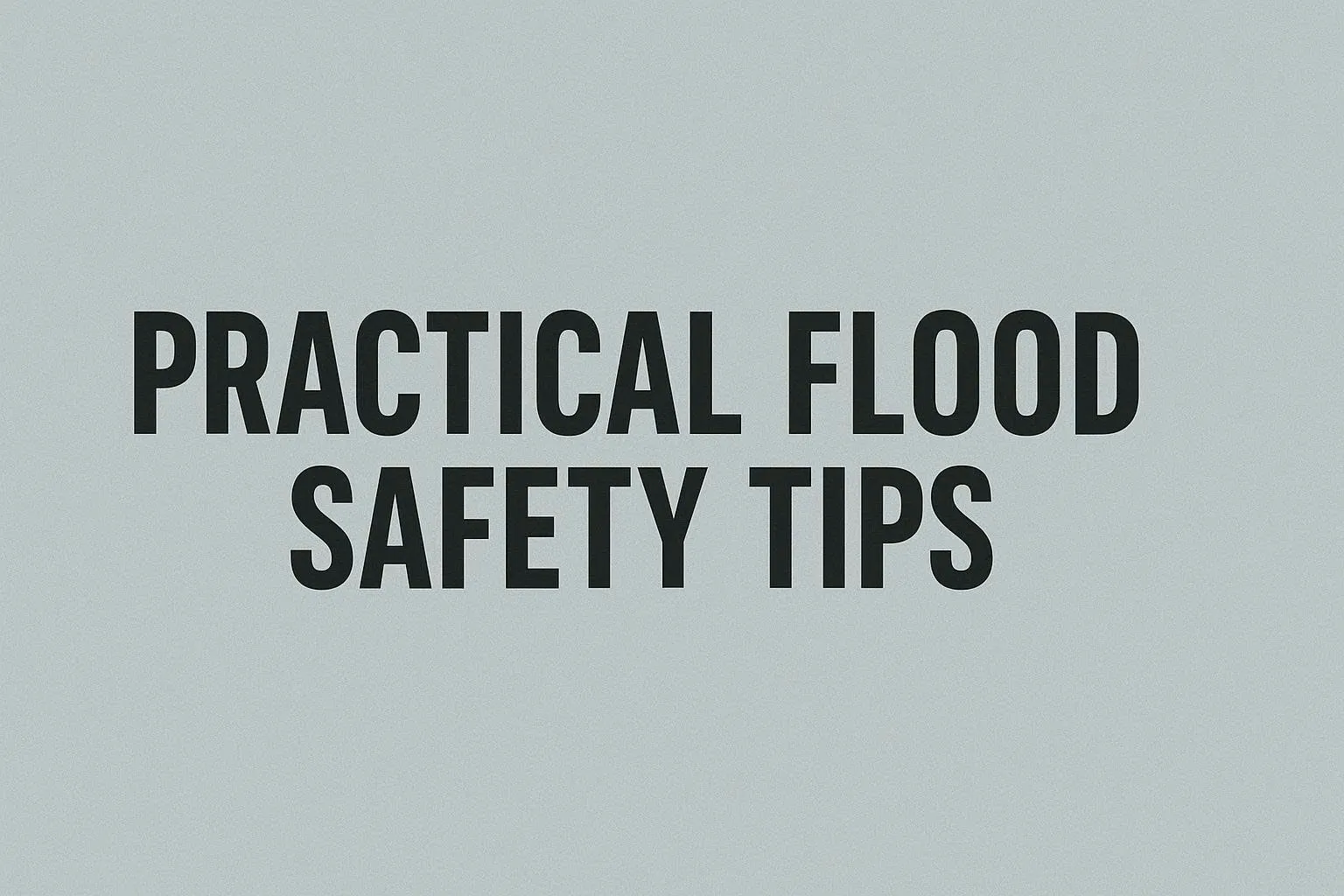
If you are already in or near an affected area, follow these crucial steps:
- Stay in a secure, elevated building; do not go out to take photos or videos of floods.
- Keep your phone fully charged and a power bank on hand.
- Drink bottled or boiled water only; avoid salads or uncooked herbs.
- Avoid all contact with floodwater - it may carry sewage or electric current.
- Store documents and valuables in waterproof bags.
- Wear closed, non-slip shoes; avoid flip-flops or sandals.
- Listen to local announcements; obey any evacuation orders immediately.
If your location loses power, move to the highest safe floor, switch off all electrical appliances, and stay updated through mobile networks or portable radios.
What to Do If You’re Stranded in Central Vietnam
For travelers currently in Hue, Hoi An, or Da Nang:
- Stay where you are until the weather clears. Traveling on flooded roads is far more dangerous than waiting.
- Contact your embassy or consulate and inform them of your exact location.
- Ask hotel staff to help translate emergency broadcasts or connect you to local authorities.
- When the situation allows, fly out via Da Nang International Airport (DAD) - the region’s only functioning hub.
-
Do not attempt to leave by bus or train; both systems are suspended and unsafe.
If you can’t leave immediately, prepare an emergency kit with essentials: medication, snacks, bottled water, flashlight, and dry clothes.
Why You Should Pivot to Ho Chi Minh City
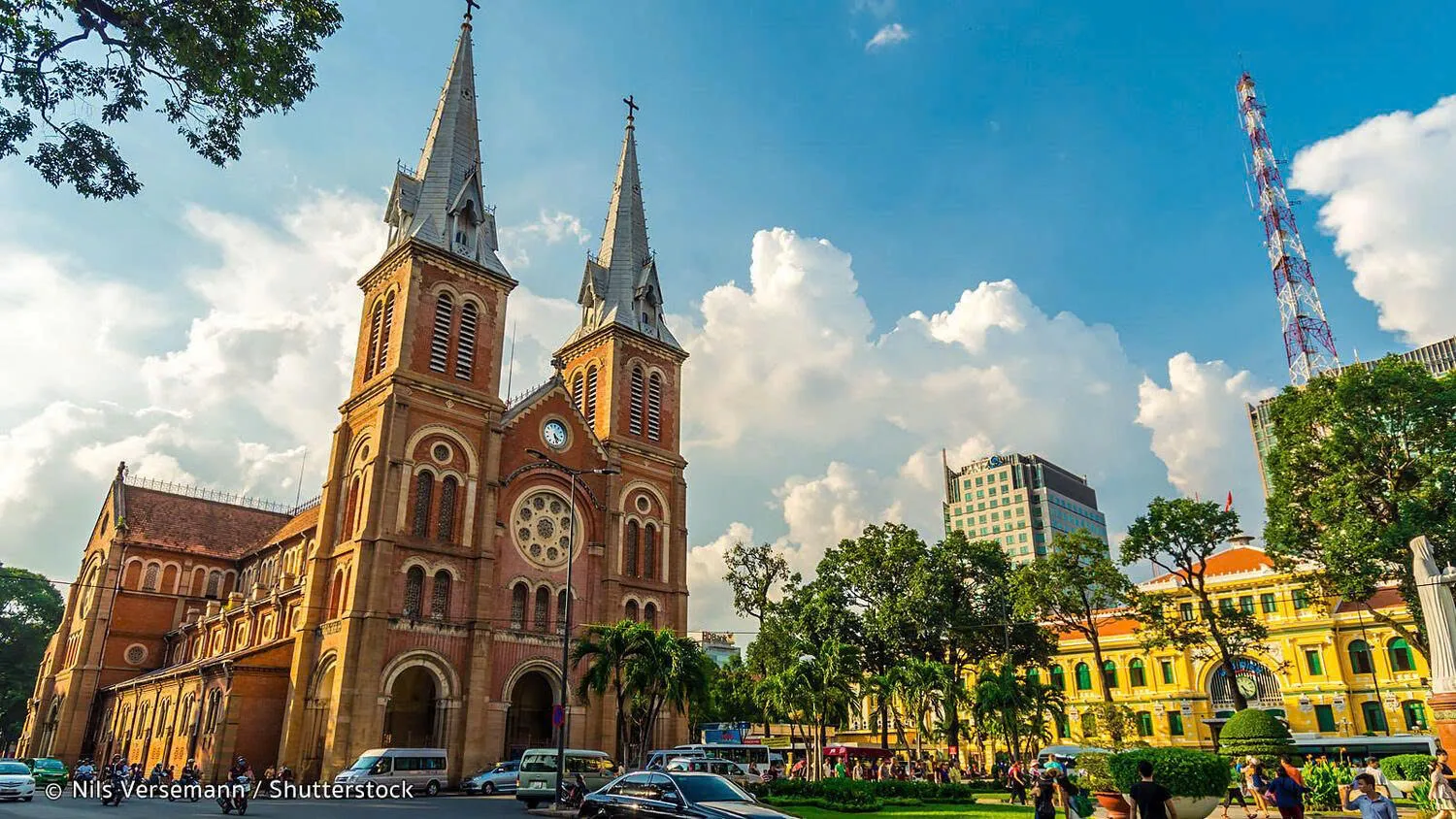
If you’ve had to cancel or reroute your Central Vietnam trip, Ho Chi Minh City is the ideal base to continue your journey safely.
It is:
- Well connected by domestic and international flights.
- Culturally rich and dynamic, with hundreds of things to do indoors or outdoors.
- Unaffected by the typhoon’s heavy rainfall.
- Home to the country’s best infrastructure and medical services.
Here, you can still experience authentic Vietnamese life without worrying about weather risks. From bustling local markets to historical museums and rooftop views, Sai Gon is both safe and full of energy.
More Things to Do in Saigon When the Rain Comes
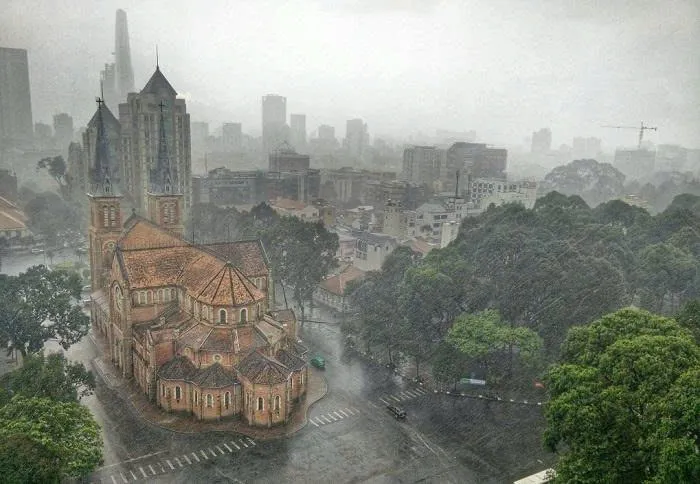
If the weather outside keeps you from exploring, don’t worry - Sai Gon is a city made for rainy days. Even when the streets are wet, the energy doesn’t fade.
Here are some ideas to fill your day while waiting for the skies to clear:
- Enjoy Vietnamese coffee. Spend a calm morning in your favorite café shop in Ho Chi Minh, watching the rain fall outside and the city hum in slow motion.
- Visit Ben Thanh Market. Walk through its colorful indoor stalls, shop for fabrics, local snacks, or souvenirs - all completely under cover.
- Get something tailored. Rainy afternoons are the perfect time for a fitting; a suit, an ao dai, or a handmade keepsake can be ready in just a few days.
- Relax at a bar or rooftop. Whether it’s a cozy cocktail spot or a high-rise lounge, Saigon’s nightlife stays alive no matter the weather.
- Explore museums. The city’s art, history, and cultural collections make for quiet, inspiring escapes when it’s pouring outside.
And when the rain finally stops, hop on your Vespa with us. The city glows after a storm - the air feels cleaner, the lights brighter, and the streets come alive again.
Experience Saigon Safely with Vespa A Go Go
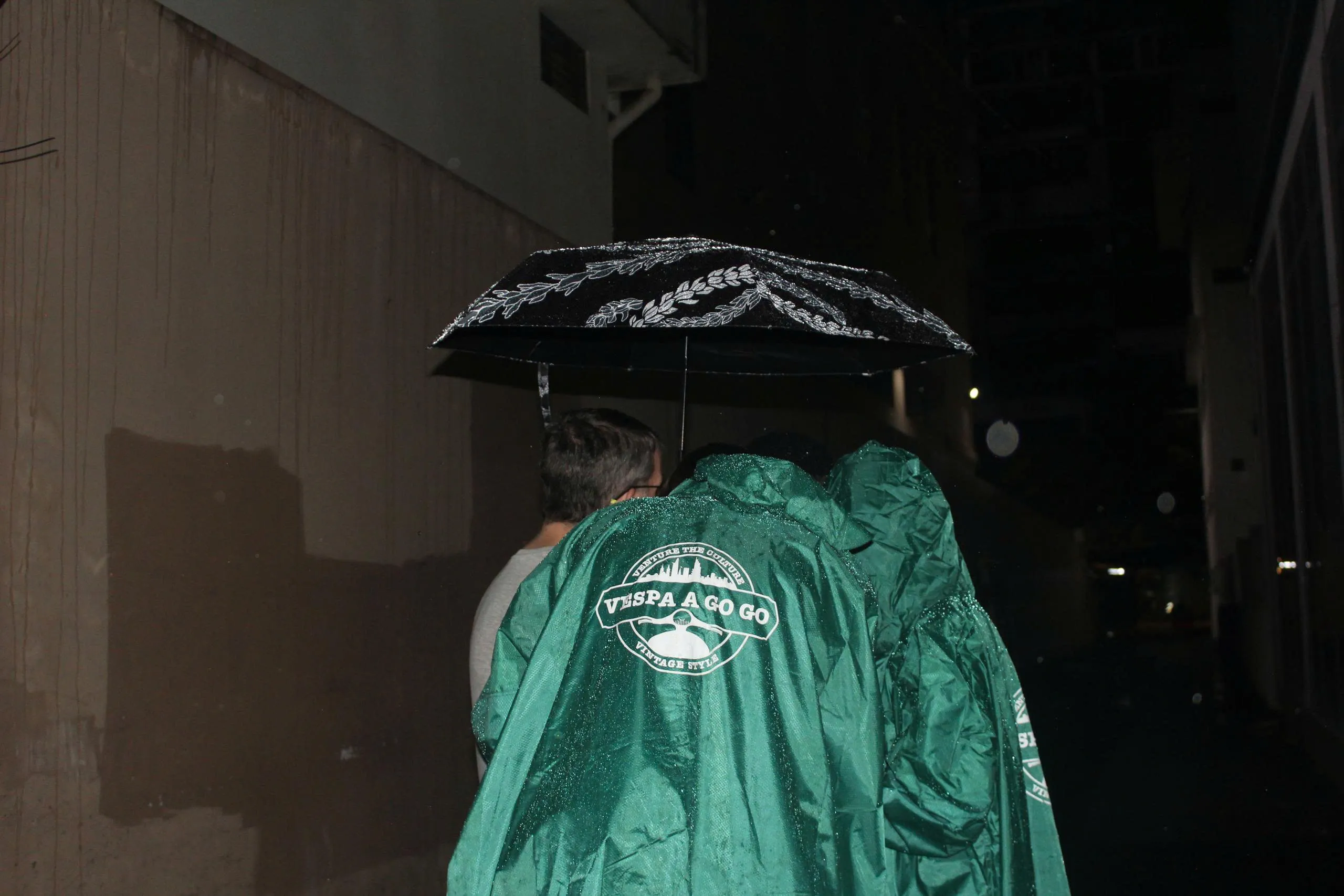
If your travel schedule has been disrupted, turn it into a once-in-a-lifetime opportunity. Join Vespa A Go Go, Sai Gon’s premier vintage scooter tour, to see the city from a completely new perspective.
Led by licensed, professional riders, Vespa A Go Go takes you beyond tourist landmarks and into the heartbeat of local life - lively alleys, hidden eateries, and riverside views untouched by the flood crisis.
Every tour is fully insured, transparent, and personalized to your interests.
If you’re already in Ho Chi Minh City, this is the perfect way to make the most of your stay - safely, meaningfully, and authentically.
6. After the Floods - Planning Ahead & Verified Information
When the water finally recedes, Central Vietnam will need time to heal. Roads, bridges, and public services will undergo repair, and tourism will gradually return. Supporting these communities later - by visiting responsibly - will make a real difference.
Until then:
- Stay informed through official weather and transport channels.
- Avoid booking non-refundable stays in flood-prone areas.
- Keep flexible itineraries and monitor updates daily.
- Always prioritize safety over schedule.
Conditions can change rapidly; always verify the latest information before traveling.
Final Message
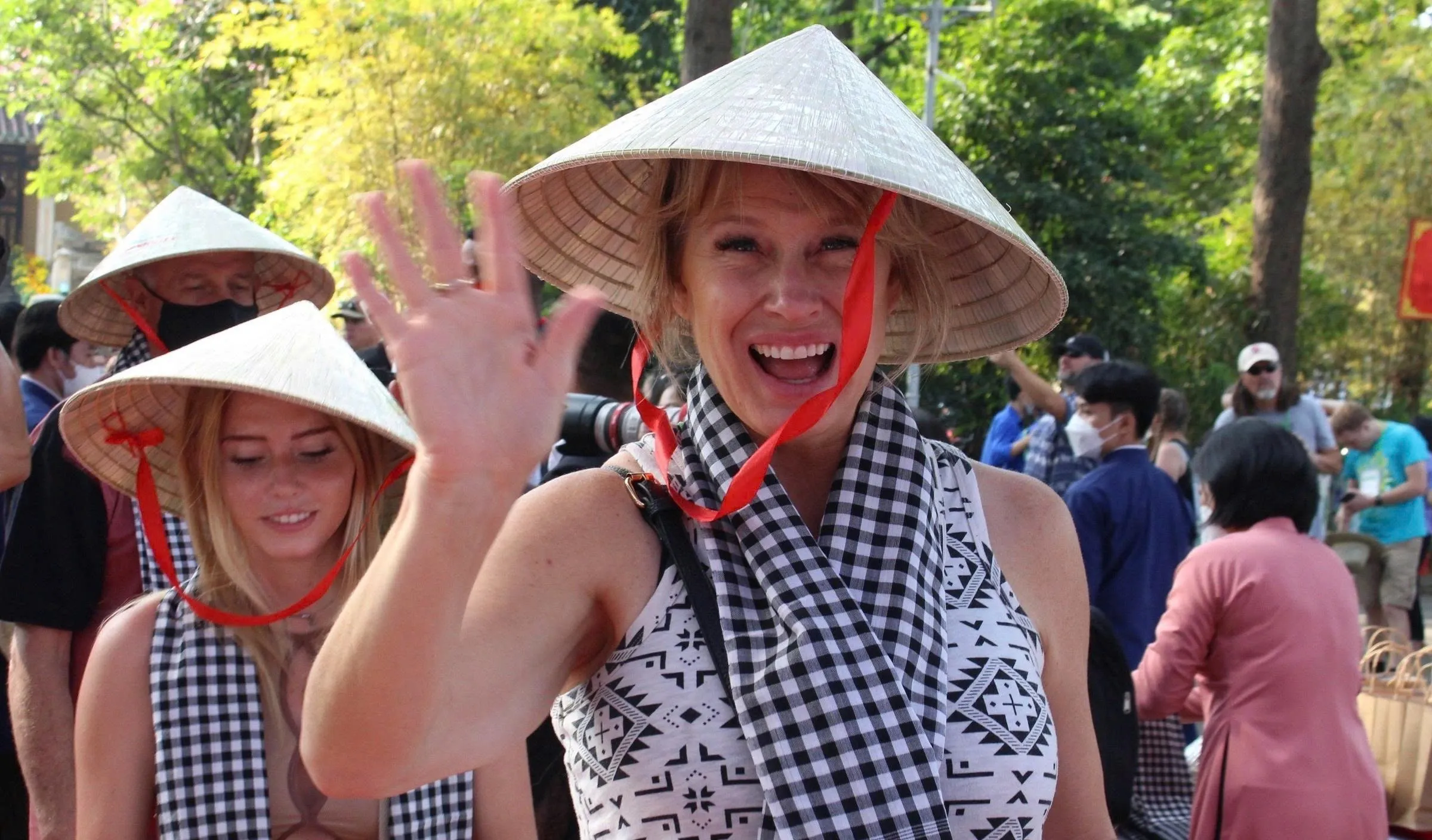
The Vietnam flood warning remains in effect across Central Vietnam, the Central Highlands, and parts of the Mekong Delta.
Travelers are urged to remain cautious, stay informed, and avoid all no-go zones.
If you’re currently in Ho Chi Minh City, you are in one of the safest and most vibrant places in the country.
Use this time to explore the city’s culture, cuisine, and kindness - proof that even in difficult times, Vietnam’s warmth never fades.
And when you’re ready to ride, let Vespa A Go Go show you Sai Gon’s pulse - alive, colorful, and completely flood-free.
Khoa Nguyen - Operation Manager
Honestly, I'm just obsessed with vintage Vespas. There's nothing quite like the feeling of riding a classic scooter—the style, the sound, the freedom. My job is to make sure each one is in perfect shape, because I truly love these machines. My goal is to share that amazing feeling with you, so you can explore Ho Chi Minh City in the coolest way possible.
Other tips
- Vietnam Flood Warning - Live Traveler Advisory & Safety Guide (Updated November 7, 2025)
- Halloween in Vietnam 2025: Saigon Special - Where to Go, What to Wear, and How to Slay the Night
- Ha Giang Loop: The Ultimate Guide to Planning Your 2025 Tour
- Vietnam Raining Season Guide: When to Go & What to Expect
- Top Things to Do in Hoi An
- What Souvenirs to Buy in Hanoi: 19+ Best Things to Buy (2025 Guide)
- Vietnam Visa for Australians 2025: A Complete Step-by-Step Guide
- Vietnam Itinerary for Small Group Travel: 10-Day Adventure Guide
- Traveling Alone in Vietnam: Best Solo Destinations, Activities & Safety Guide (2025)
- Vietnam’s Villages: A Deep Dive into their Hidden Charms
- Vietnam Reunification Day: What You Should Know About April 30th 2025


